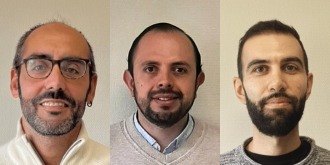
Carlos Dionisio Pérez Blanco, David Rivas Tabares, and Francesco Sapino, IMDEA Water
Water theft claims between 30% and 50% of the global water supply, and despite policy efforts to tackle it, is still on the rise. The policy failure to tackle water theft has been attributed to the nonlinear adaptive responses by economic agents such as irrigators, which can affect and be affected by other socioeconomic (e.g., growing commodity prices) and ecological processes (e.g., water scarcity) via feedback loops with cascading impacts that are difficult to foresee. This has led to adaptation surprises with unexpected policy consequences, which have increased rather than reduced water theft, thus depleting water bodies and hampering sustainable development. WaterTheft is developing a novel approach to forecast adaptation surprises in complex human-water systems. To this end, it will 1) combine microeconomic mathematical programming models with behavioral economic methods to forecast the nonlinear adaptive responses of individual agents over time; 2) integrate the behavior of individual agents into agent-based models and macroeconomic models to forecast nonlinear spatial trends emerging from human interactions at the local to global level; 3) endogenize these socioeconomic processes into human-water system models to forecast nonlinear socio-hydrological phenomena; and 4) use ensemble experiments to quantify scenario and modeling uncertainties, and forecast nonlinearities that may emerge or be amplified due to issues of model parameterization/structure or scenario design. These innovations will allow to predict the emergence of nonlinearities and track their impact across coupled human-water systems, thus discovering adaptation surprises and their drivers. Methods will be empirically applied and tested in 3 living labs in Spain, Australia, and the US experiencing water theft.
Economic modeling This research develops and applies ensemble microeconomic models to simulate farmers’ behavior under uncertainty, with a focus on agricultural water use in the face of climate variability and policy change. By integrating high-resolution hydroclimatic inputs (e.g., future predictions of yields and water availability) into economic decision-making frameworks, we capture the dynamic feedback between natural systems and farm-level choices. Our modeling strategy embraces heterogeneity in farmer preferences, risk perceptions, and resource constraints. This microeconomic model ensemble is further coupled with a macroeconomic framework to evaluate, in a bidirectional manner, how shifts in local agricultural production influence global markets—and conversely, how global economic dynamics feedback into local farming decisions. A current limitation of the approach lies in its computational intensity, as it requires integrating hundreds of thousands of future scenarios into the microeconomic models, which must then converge with the hydrologic and macroeconomic models in a consistent and iterative solution process.
Hydrologic modeling This research focuses on advancing complex hydrological modeling by optimizing input structures to improve computational efficiency. The goal is to reduce model complexity by coupling data input models, enabling efficient routing while preserving the statistical integrity of primary data during model development. The Soil and Water Assessment Tool (SWAT) is a widely used hydrological model for simulating the impact of land management practices on water, sediment, and agricultural chemical yields. A key element in SWAT is the hydrological response unit (HRU), which represents a spatial area within a watershed that combines land use, soil type, and slope. The current approach involves refining these HRUs to enhance the performance of the semidistributed SWAT model by integrating both semidistributed and conceptual frameworks. This modification aims to reduce the computational time traditionally associated with SWAT, which is known for its high computational demands. Several alternatives have been tested in the Duero River basin to assess their potential for improving model efficiency. The effectiveness of these improvements will be tested in multiple regions, including a subbasin in California, the Duero River basin in Spain, and a subbasin of the Murray-Darling Basin in Australia, with the goal of advancing hydrological modeling efficiency across diverse geographic contexts.